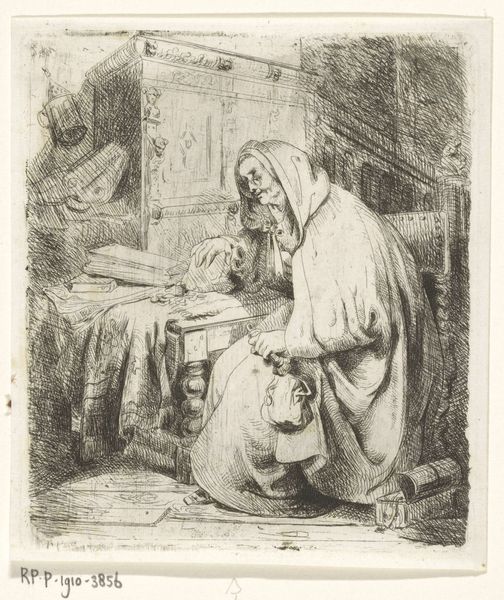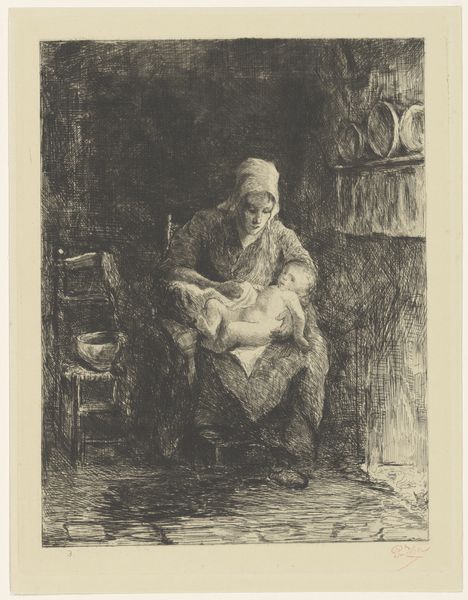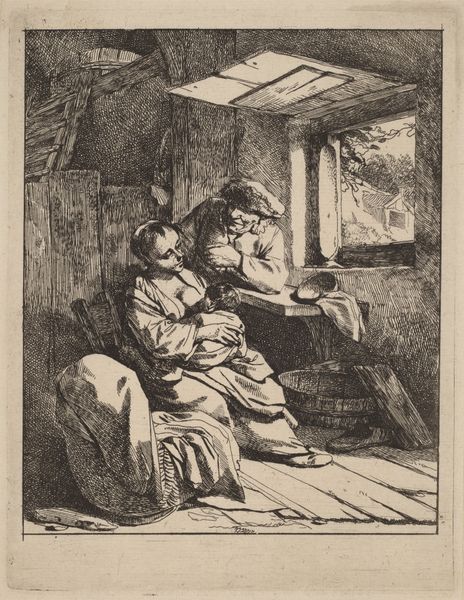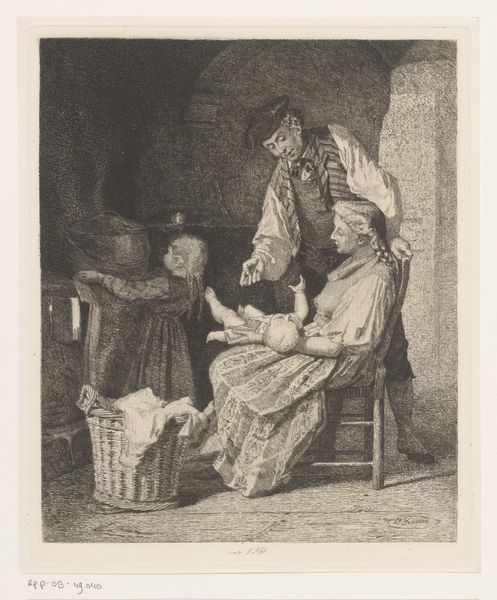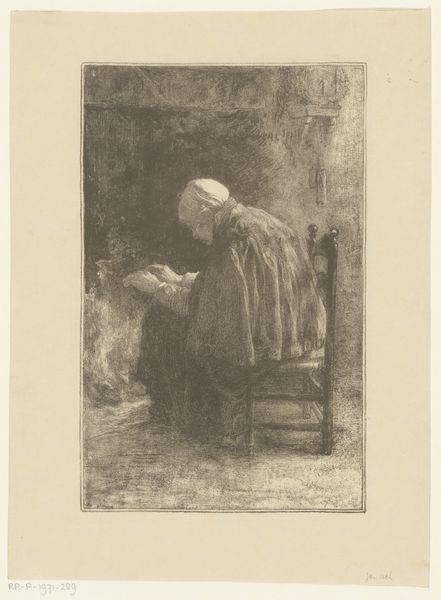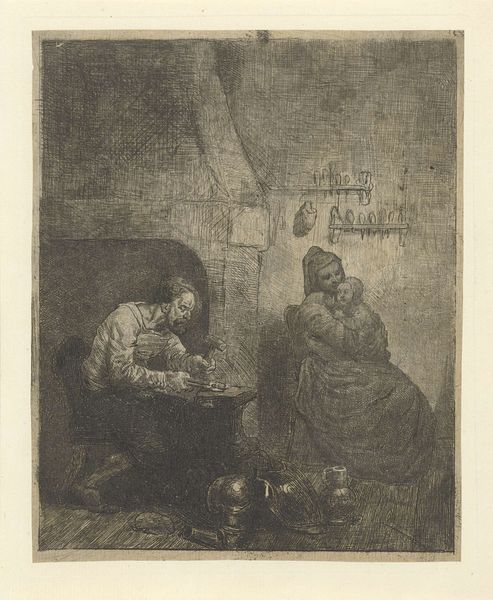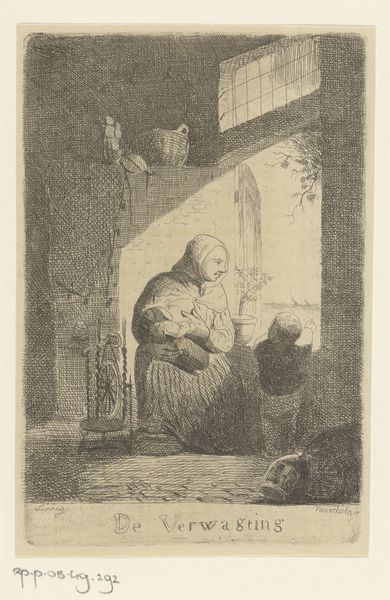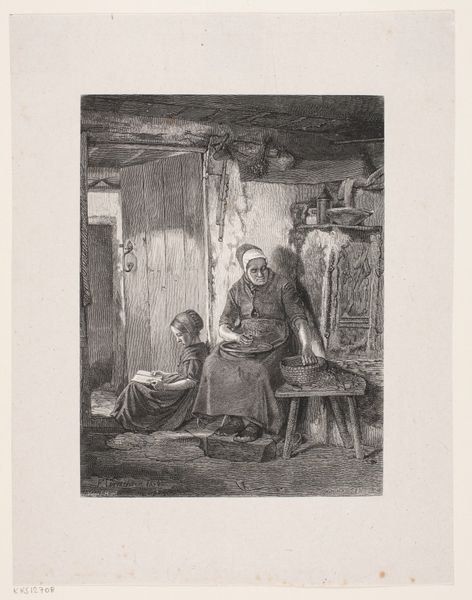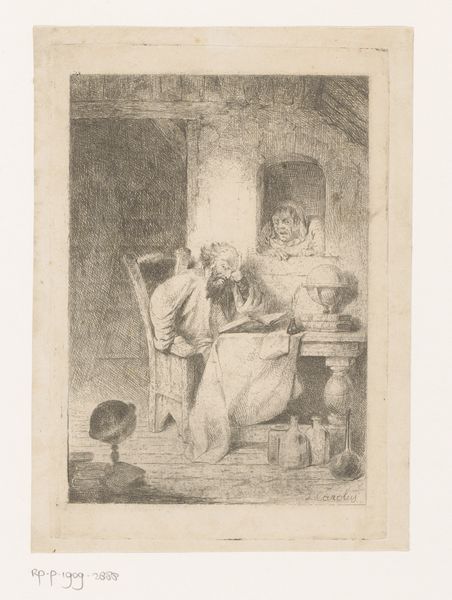
drawing, print, etching
#
drawing
#
narrative-art
# print
#
etching
#
form
#
line
#
genre-painting
#
realism
Dimensions: height 229 mm, width 174 mm
Copyright: Rijks Museum: Open Domain
Editor: Here we have "Verstoppertje Spelen," or "Hide and Seek" by Willem Steelink, created sometime between 1866 and 1913. It's an etching, so a print, with a domestic scene. I’m struck by the somber mood, despite the children seemingly at play. What stands out to you? Curator: Well, considering the period it was made, and the social realism movement's focus, it's hard not to see this within the context of social critique. How do you interpret the "game" itself? Does it seem genuinely playful, or something else? Editor: I initially saw it as carefree, but you're right, the title feels ironic now. The scene looks quite bleak. So, what aspects point to that critique you mentioned? Curator: Consider the setting, a sparse interior. The children aren’t in a field, they are within the confines of, presumably, their home. Also, consider the mother absorbed in mending. Is she participating in the children's game? What does it mean to depict this as "play"? I suggest it is an allegory for the limited opportunities afforded to certain classes, their ‘play’ is constrained by their circumstances. Editor: That's fascinating. So, the print isn’t simply depicting children playing, but it comments on the socio-economic realities that shape even their leisure? Curator: Exactly. Steelink presents a snapshot of working-class life, using the seemingly innocent subject of children's games to highlight issues of poverty and the constraints on individual development imposed by social conditions. Editor: That reframes the entire image. It’s not just a snapshot, it's a statement. I'll never look at genre paintings the same way. Thank you! Curator: Indeed. Art often reflects, and sometimes challenges, the social structures it exists within. That is, perhaps, its most significant role.
Comments
No comments
Be the first to comment and join the conversation on the ultimate creative platform.

